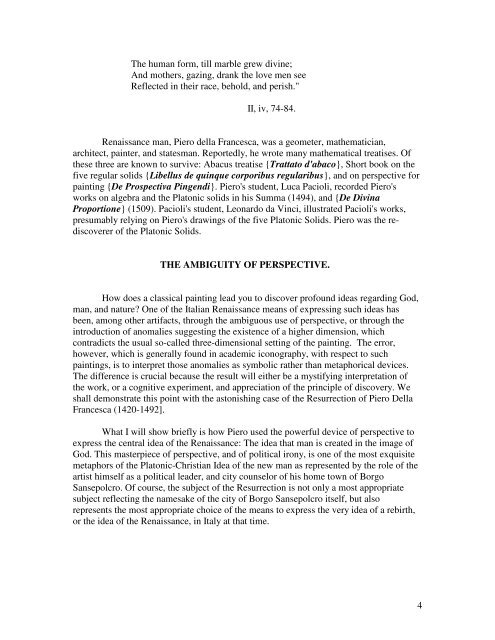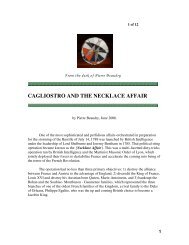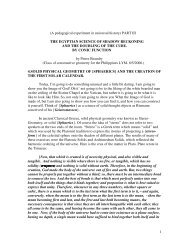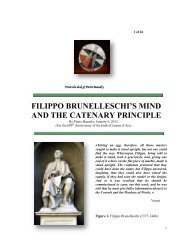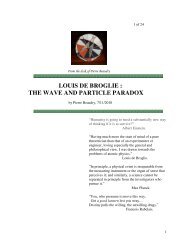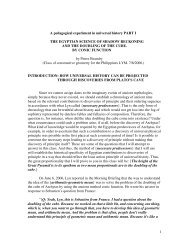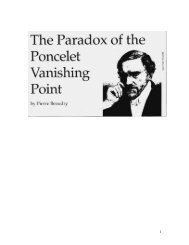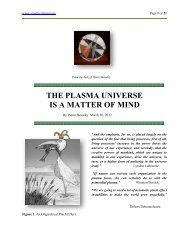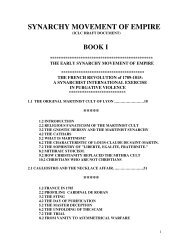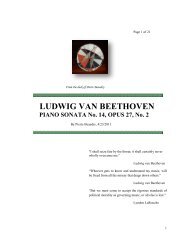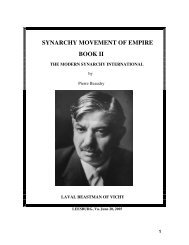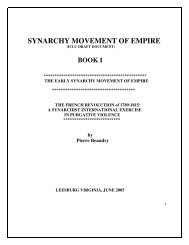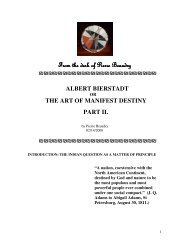PIERO DELLA FRANCESCA THE RESURRECTION.pdf
PIERO DELLA FRANCESCA THE RESURRECTION.pdf
PIERO DELLA FRANCESCA THE RESURRECTION.pdf
You also want an ePaper? Increase the reach of your titles
YUMPU automatically turns print PDFs into web optimized ePapers that Google loves.
The human form, till marble grew divine;<br />
And mothers, gazing, drank the love men see<br />
Reflected in their race, behold, and perish."<br />
II, iv, 74-84.<br />
Renaissance man, Piero della Francesca, was a geometer, mathematician,<br />
architect, painter, and statesman. Reportedly, he wrote many mathematical treatises. Of<br />
these three are known to survive: Abacus treatise {Trattato d'abaco}, Short book on the<br />
five regular solids {Libellus de quinque corporibus regularibus}, and on perspective for<br />
painting {De Prospectiva Pingendi}. Piero's student, Luca Pacioli, recorded Piero's<br />
works on algebra and the Platonic solids in his Summa (1494), and {De Divina<br />
Proportione} (1509). Pacioli's student, Leonardo da Vinci, illustrated Pacioli's works,<br />
presumably relying on Piero's drawings of the five Platonic Solids. Piero was the rediscoverer<br />
of the Platonic Solids.<br />
<strong>THE</strong> AMBIGUITY OF PERSPECTIVE.<br />
How does a classical painting lead you to discover profound ideas regarding God,<br />
man, and nature? One of the Italian Renaissance means of expressing such ideas has<br />
been, among other artifacts, through the ambiguous use of perspective, or through the<br />
introduction of anomalies suggesting the existence of a higher dimension, which<br />
contradicts the usual so-called three-dimensional setting of the painting. The error,<br />
however, which is generally found in academic iconography, with respect to such<br />
paintings, is to interpret those anomalies as symbolic rather than metaphorical devices.<br />
The difference is crucial because the result will either be a mystifying interpretation of<br />
the work, or a cognitive experiment, and appreciation of the principle of discovery. We<br />
shall demonstrate this point with the astonishing case of the Resurrection of Piero Della<br />
Francesca (1420-1492].<br />
What I will show briefly is how Piero used the powerful device of perspective to<br />
express the central idea of the Renaissance: The idea that man is created in the image of<br />
God. This masterpiece of perspective, and of political irony, is one of the most exquisite<br />
metaphors of the Platonic-Christian Idea of the new man as represented by the role of the<br />
artist himself as a political leader, and city counselor of his home town of Borgo<br />
Sansepolcro. Of course, the subject of the Resurrection is not only a most appropriate<br />
subject reflecting the namesake of the city of Borgo Sansepolcro itself, but also<br />
represents the most appropriate choice of the means to express the very idea of a rebirth,<br />
or the idea of the Renaissance, in Italy at that time.<br />
4


